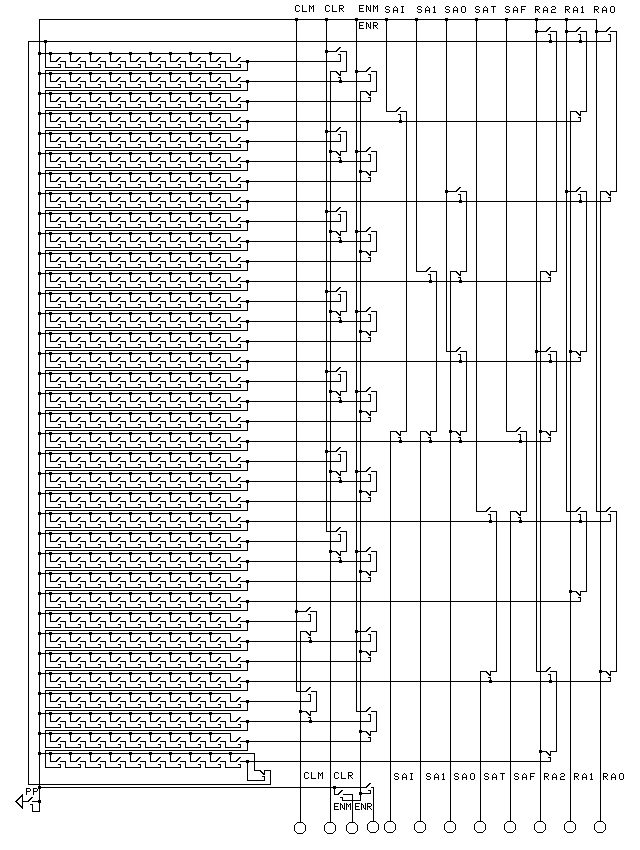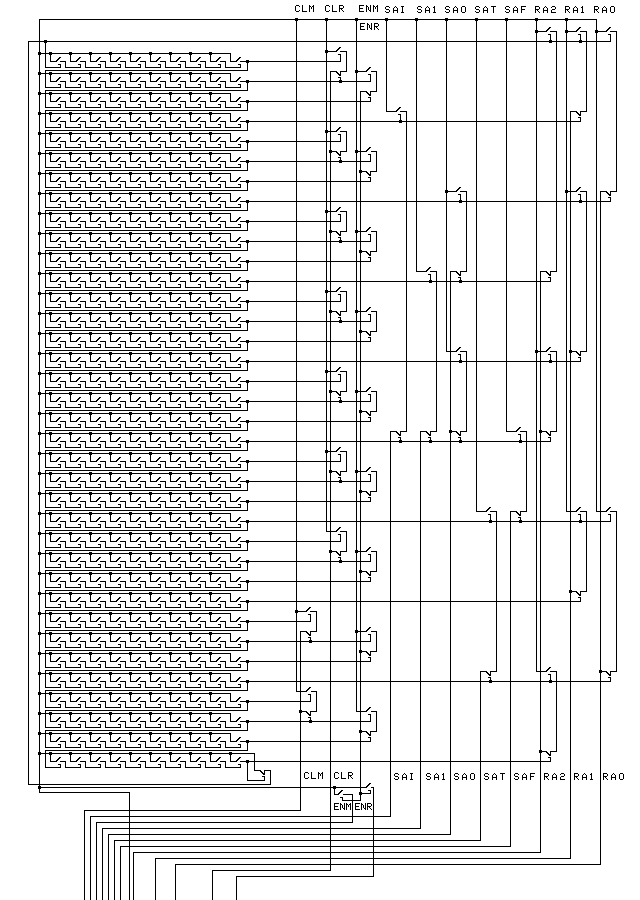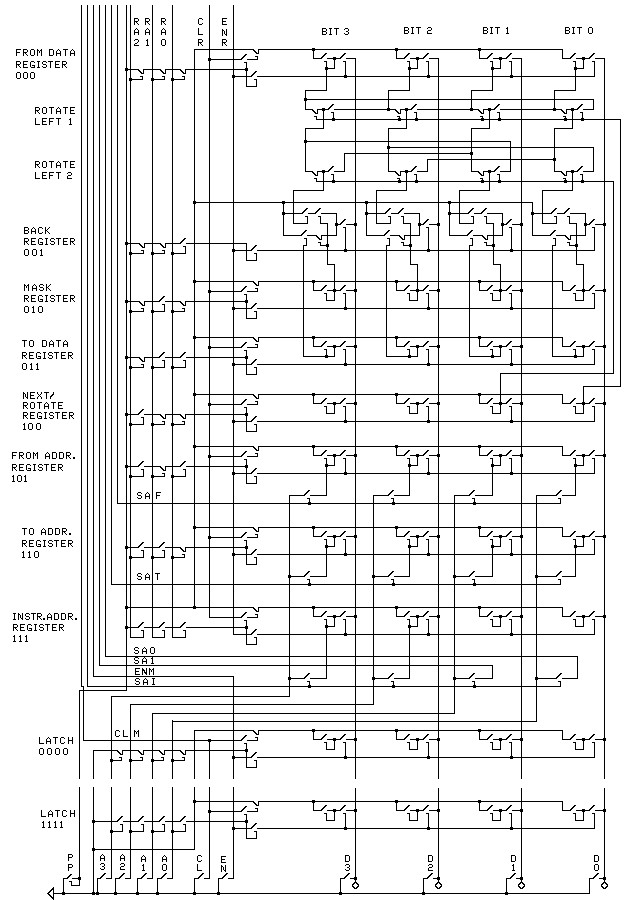Clock Circuit for Processor

The preceding clock circuit shows a circuit that repeatedly generates the timing diagram signals. The outputs of this circuit can be connected to the processor to make the processor repeatedly execute instructions as indicated in the diagram of the complete (though simple) computer in the diagram below.
The operation of a clock has already been explained.
It takes about 361 hundredths of a second for the timing diagram to be generated. Then all outputs of the right hand side are 0 for another about 361 hundredths of a second. Then the timing diagram is generated again, etc. Therefore, it takes this computer about 722 hundredths of a second to execute each instruction! This is one main reason that transistors are now used. Transistors are millions of times faster. The other reason is that a relay costs as much as many thousands of interconnected transistors. However, a transistor-based computer works in the same way as a relay-based computer. The cheapness of transistors allows much more memory. It also allows extra things to be added to the processor like more registers and extra circuits to do certain common things, like multiply two numbers together, more quickly.
The whole computer is illustrated on the following two diagrams. The clock, processor and memory are shown and interconnected. The processor includes the rotate and mask circuitry.
To use the computer below, first enter the program and data into the memory with the keys at the bottom of the circuit: A3, A2, A1, A0, CL, EN, D3, D2, D1, and D0. Then, press PP at the bottom of the circuit to make the computer run. Wait until the program is finished and lift up key PP. Then use the keys at the bottom of the circuit to read the results from memory.

